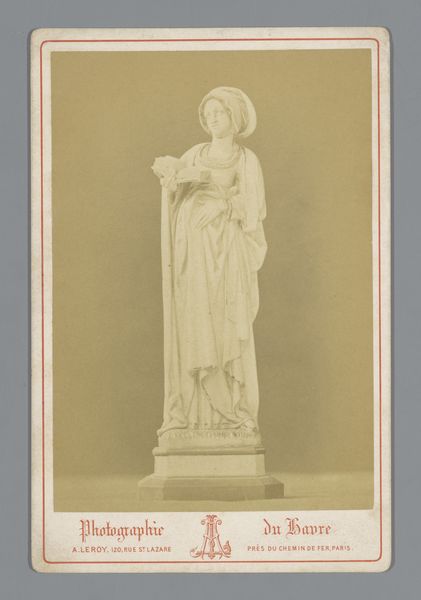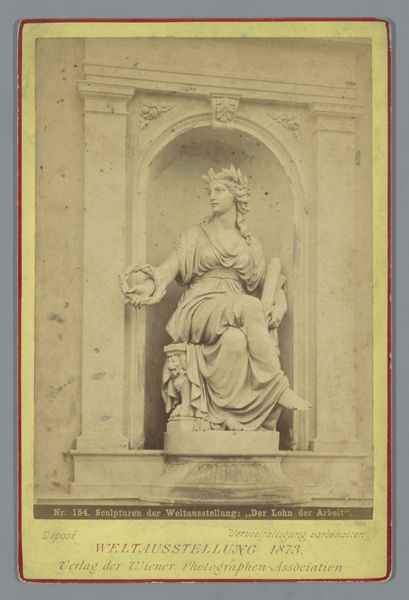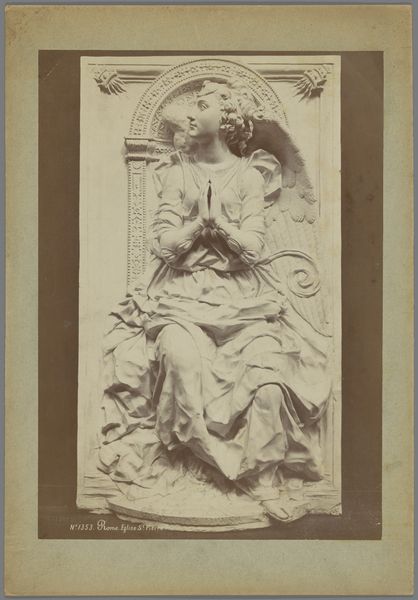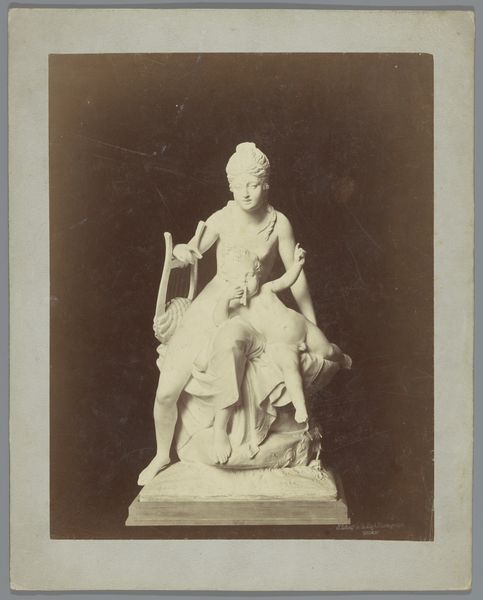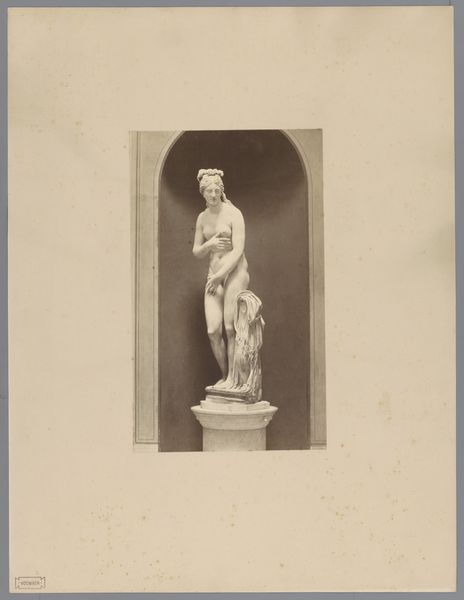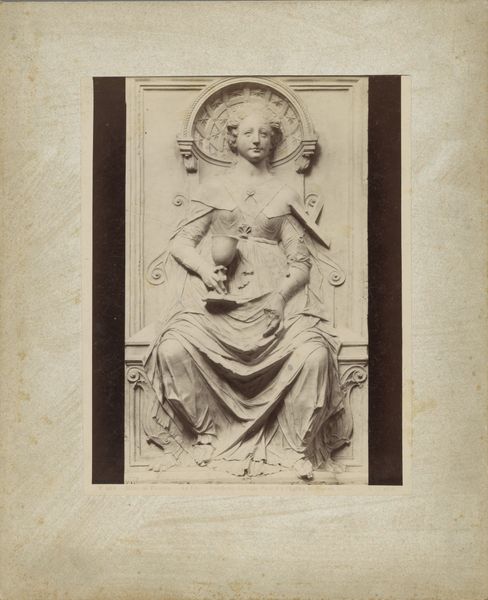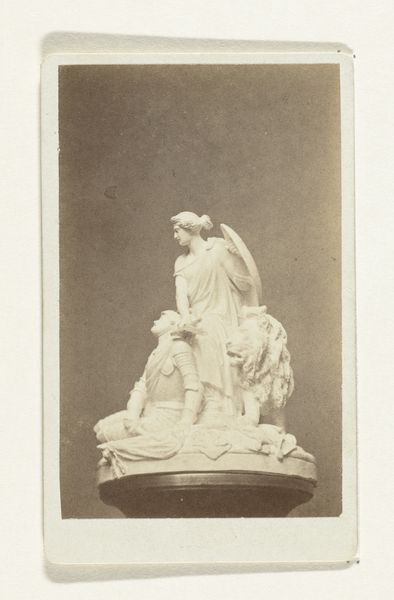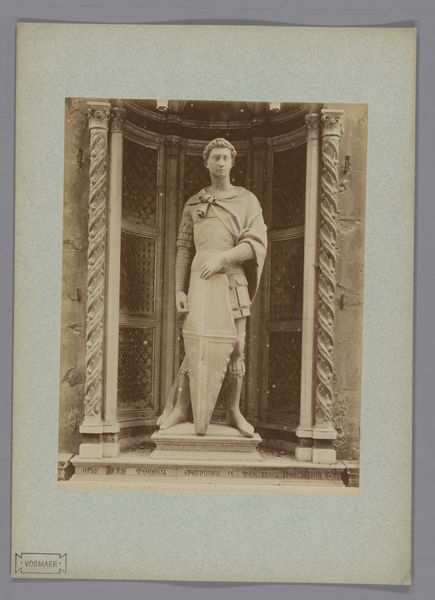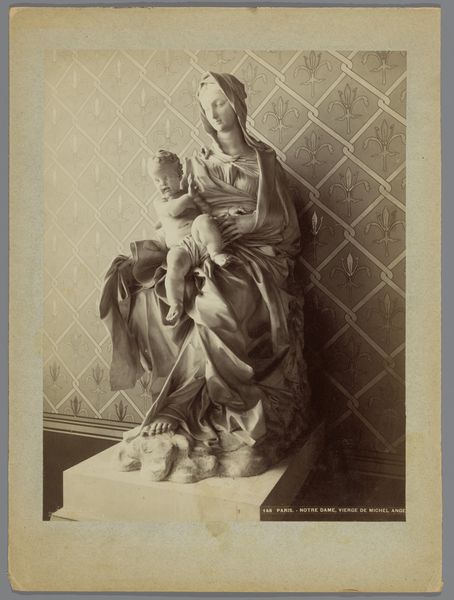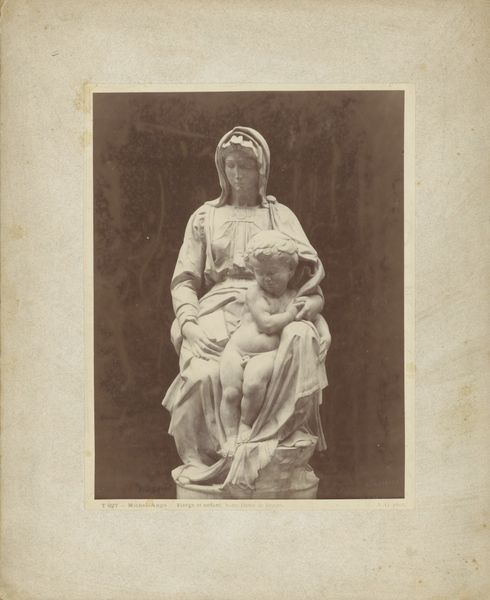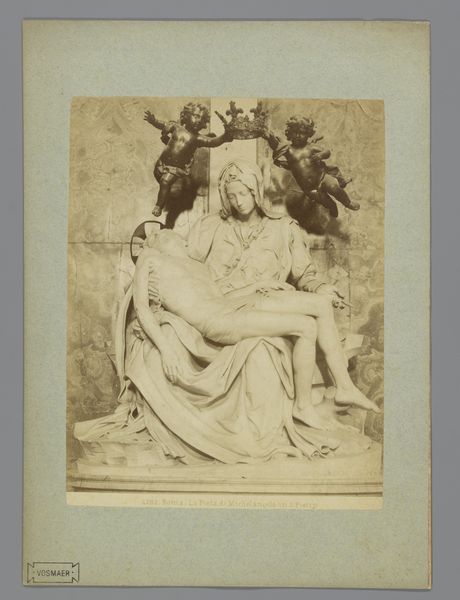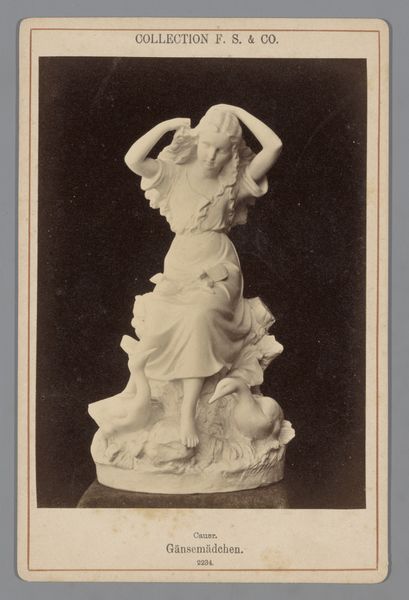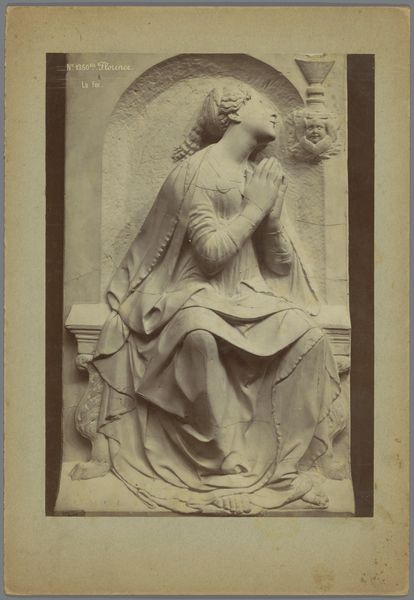
print, photography, sculpture, marble
#
portrait
#
statue
# print
#
photography
#
sculpture
#
19th century
#
marble
#
italian-renaissance
#
statue
Dimensions: height 165 mm, width 108 mm
Copyright: Rijks Museum: Open Domain
Curator: This is a photograph depicting a sculpture entitled "Beeldhouwwerk de maagd van Michelangelo," or "Sculpture of the Virgin by Michelangelo." The photo was taken sometime between 1864 and 1900, and is presumed to be the sculpture attributed to Michelangelo. Editor: The photographic print has an arresting stillness. The sculpture itself feels heavy, solid, its marble smoothed and softened by the passage of time. But in its vintage presentation as a photographic reproduction it appears fragile, and sepia-toned, suggesting themes of cultural memory. Curator: The visual symbolism certainly invites a deeper reflection. We see the Virgin Mary, of course, instantly recognizable in the Western iconographic tradition. The serene expression, the draped fabric...it speaks to ideals of motherhood, purity, and devotion. The infant Jesus beside her adds a layer of vulnerability, hinting at the future sacrifices to come. Editor: I’m struck by the sculpture's broader historical implications, as an artwork created by a male artist in the Renaissance of Mary’s identity as a vehicle and incubator for divine intervention. The cultural framework often confines female roles and power. The male gaze often emphasizes purity over agency. Curator: That's a fair point. But do you think we can also see her as a symbol of strength and resilience? Mothers throughout history have faced immense challenges. The Virgin, for many, represents a figure of hope. She intercedes in difficult situations and inspires. The visual narrative speaks as much to hope as it does about constraint. Editor: Perhaps. But it's crucial to remember the original cultural context and ongoing discussions around gender and representation when considering such figures, so it can continue to evolve in an equal society. Curator: Indeed. By understanding how those symbols resonated in the past and how they evolve now, we see not just historical artworks but living cultural touchstones. Editor: Yes, engaging with this intersectional complexity is the enduring legacy.
Comments
No comments
Be the first to comment and join the conversation on the ultimate creative platform.
